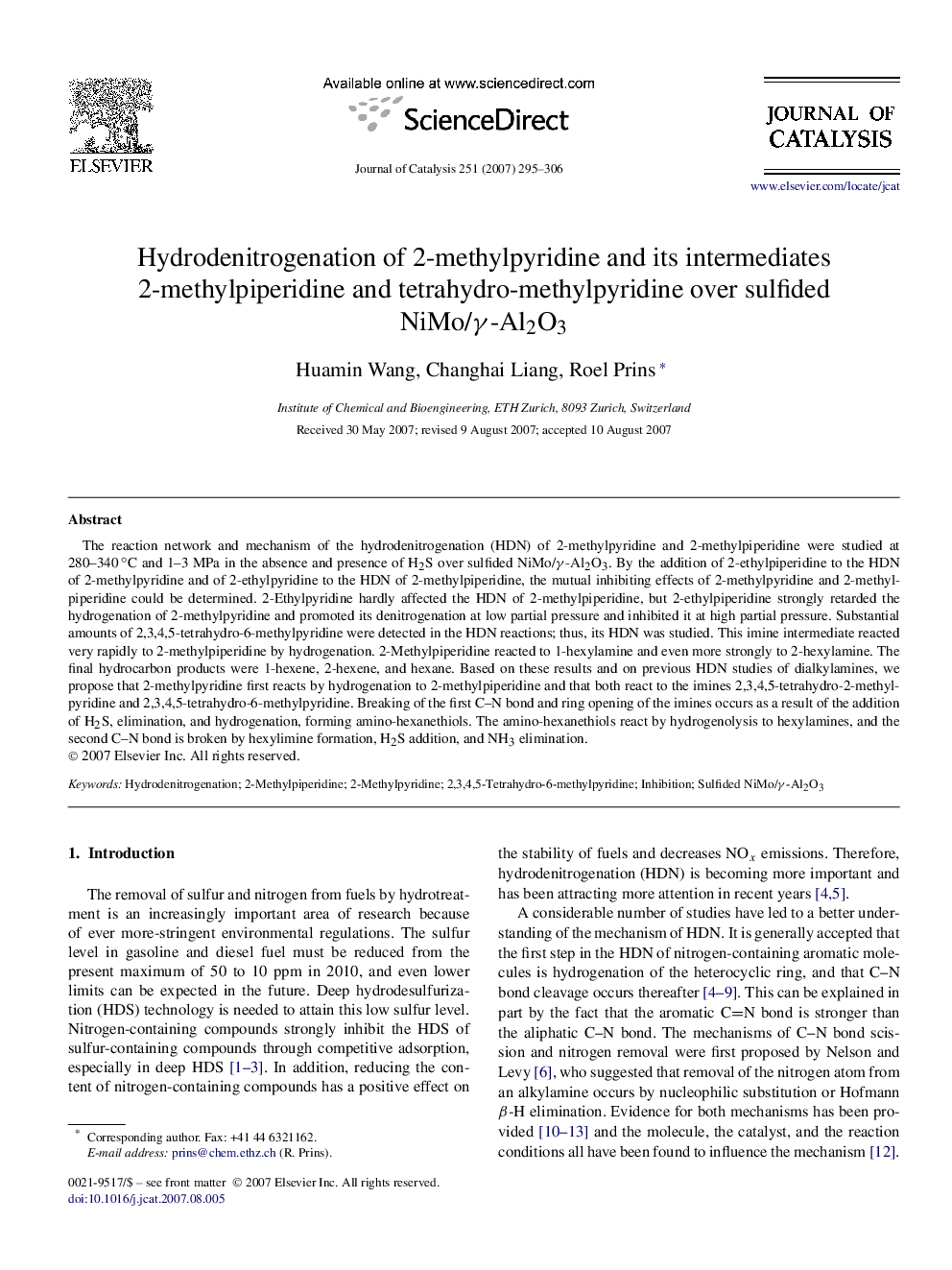| Article ID | Journal | Published Year | Pages | File Type |
|---|---|---|---|---|
| 62691 | Journal of Catalysis | 2007 | 12 Pages |
The reaction network and mechanism of the hydrodenitrogenation (HDN) of 2-methylpyridine and 2-methylpiperidine were studied at 280–340 °C and 1–3 MPa in the absence and presence of H2S over sulfided NiMo/γ-Al2O3. By the addition of 2-ethylpiperidine to the HDN of 2-methylpyridine and of 2-ethylpyridine to the HDN of 2-methylpiperidine, the mutual inhibiting effects of 2-methylpyridine and 2-methylpiperidine could be determined. 2-Ethylpyridine hardly affected the HDN of 2-methylpiperidine, but 2-ethylpiperidine strongly retarded the hydrogenation of 2-methylpyridine and promoted its denitrogenation at low partial pressure and inhibited it at high partial pressure. Substantial amounts of 2,3,4,5-tetrahydro-6-methylpyridine were detected in the HDN reactions; thus, its HDN was studied. This imine intermediate reacted very rapidly to 2-methylpiperidine by hydrogenation. 2-Methylpiperidine reacted to 1-hexylamine and even more strongly to 2-hexylamine. The final hydrocarbon products were 1-hexene, 2-hexene, and hexane. Based on these results and on previous HDN studies of dialkylamines, we propose that 2-methylpyridine first reacts by hydrogenation to 2-methylpiperidine and that both react to the imines 2,3,4,5-tetrahydro-2-methylpyridine and 2,3,4,5-tetrahydro-6-methylpyridine. Breaking of the first CN bond and ring opening of the imines occurs as a result of the addition of H2S, elimination, and hydrogenation, forming amino-hexanethiols. The amino-hexanethiols react by hydrogenolysis to hexylamines, and the second CN bond is broken by hexylimine formation, H2S addition, and NH3 elimination.
